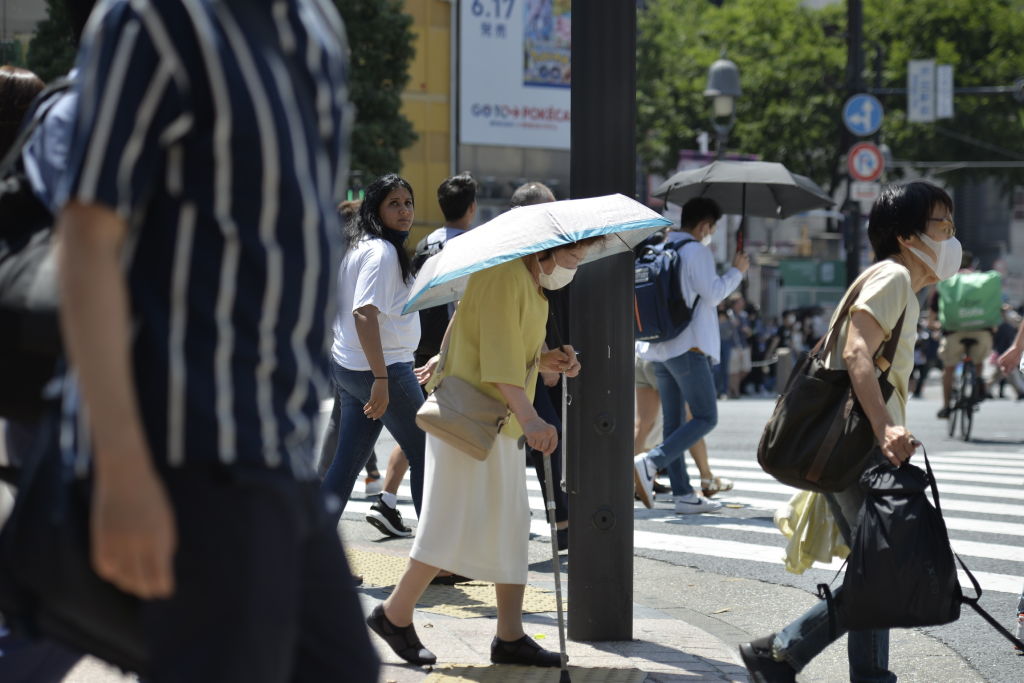
Japanese Prime Minister Fumio Kishida says his country is on the brink of catastrophe. Japan is by some measures the oldest nation in the world, with 29.1% of people over 65. Deaths far outpace births, and, by 2050 the population is expected to shrink by a fifth. The workforce is contracting. The social security burden is growing. “Our nation is on the cusp of whether it can maintain its societal functions,” Kishida said on Jan. 23, as he announced last-ditch policy measures to increase the birth rate. “It is now or never.”
“Never” might be best, from a climate perspective. Population issues can be hard to talk about in the environmental movement. A controversial subset of campaigners has framed population growth in Africa and South Asia as the greatest threat to efforts to stop global warming—despite people in those regions contributing a small fraction of the world’s greenhouse gas emissions. I want to be clear that population control is not the solution to climate change.
But it doesn’t make sense for developed countries to ignore the positive role that their shrinking populations could play in the climate fight. The average person in Japan emits 54 times more carbon dioxide a year than the average person in South Sudan, the country that grew the most in 2021. Even though emissions in developing regions will likely grow with living standards, in the crucial next few decades, it is wealthy, aging countries like Japan, the U.S., the U.K. and Germany that are the bigger problem. Fewer people in those countries would mean less consumption, lower emissions, and less damage to the natural world. Individuals have begun to contemplate that fact, with one in four childless adults in the U.S. citing climate change as a reason not to reproduce in a 2020 survey. Experts, however, say it is governments that urgently need to factor the environment into their demographic decisions—and aging into their climate plans.
A version of this story first appeared in the Climate is Everything newsletter. To sign up, click here.
“On the one hand we’ve had real fear about what [growing populations] may do to the planet,” says Sarah Harper, director of the Oxford Institute of Population Aging, who has studied the link between demographics and climate change. “But on the other, individual countries are saying, ‘Oh gosh, we’ve got to stop our population declining. We need growth to keep our economies running.’”
The problem, Harper says, is that aging countries like Japan are still thinking about population through a “19th century model,” in which economic success depended on having as many young people as possible to work in fields and factories. Technology and the globalization of supply and demand mean that need no longer be the case, while green economists are offering new ways to measure success outside of GDP growth. But there are three key challenges that wealthy countries need to address if they want to age gracefully in the climate crisis.
First, to fill essential jobs—including the expanding task of elder care—aging societies must attract immigrants. The U.K., Italy, and Germany have already been reliant on immigrants to prevent population decline since the 1970s, as has the U.S. since 2010. With fertility declines continuing, this need will likely grow, and it should increase pressure to undo a wave of anti-immigration policies adopted by richer countries in recent years. Japan, for example, has been trying to lower its historically high barriers to entry for foreigners since 2018, because of labor shortages. Happily, a more welcoming attitude to migrants would align with wealthy countries’ moral duty to take in some of the growing number of people being displaced by climate disasters. Many of those disasters are happening in regions, like sub-Saharan Africa, with young, rapidly growing populations.
Second, cutting emissions will increasingly depend on the lifestyles older people choose. Researchers are divided over whether people typically become more or less polluting in later life. (We might use more energy to heat or cool homes, or power medical equipment, but less to travel, for example.) What’s clear is that a retiree who moves to a big house in the desert, cools it with A/C, and flies or drives frequently, will emit more than one who lives with family or in a city apartment, and uses public transit to get around. Making the latter more attractive is a job for national and local governments.
Third, as populations age, they will become more vulnerable to the effects of climate change. Elderly people are less resilient to extreme heat and less able to evacuate wildfires and storms—a lesson Japan has learned, painfully, in recent years from flash floods which have disproportionately killed nursing home residents.
The good news is that the measures that will protect elderly people from climate change—finding green ways to cool down cities, improving early warning systems, rolling out clean energy to reduce emissions—are the same ones that will protect society as a whole. My hope is that by the time I’m 70, in 2059, we’ll have taken them.
More Must-Reads from TIME
- Cybersecurity Experts Are Sounding the Alarm on DOGE
- Meet the 2025 Women of the Year
- The Harsh Truth About Disability Inclusion
- Why Do More Young Adults Have Cancer?
- Colman Domingo Leads With Radical Love
- How to Get Better at Doing Things Alone
- Michelle Zauner Stares Down the Darkness
Write to Ciara Nugent at ciara.nugent@time.com